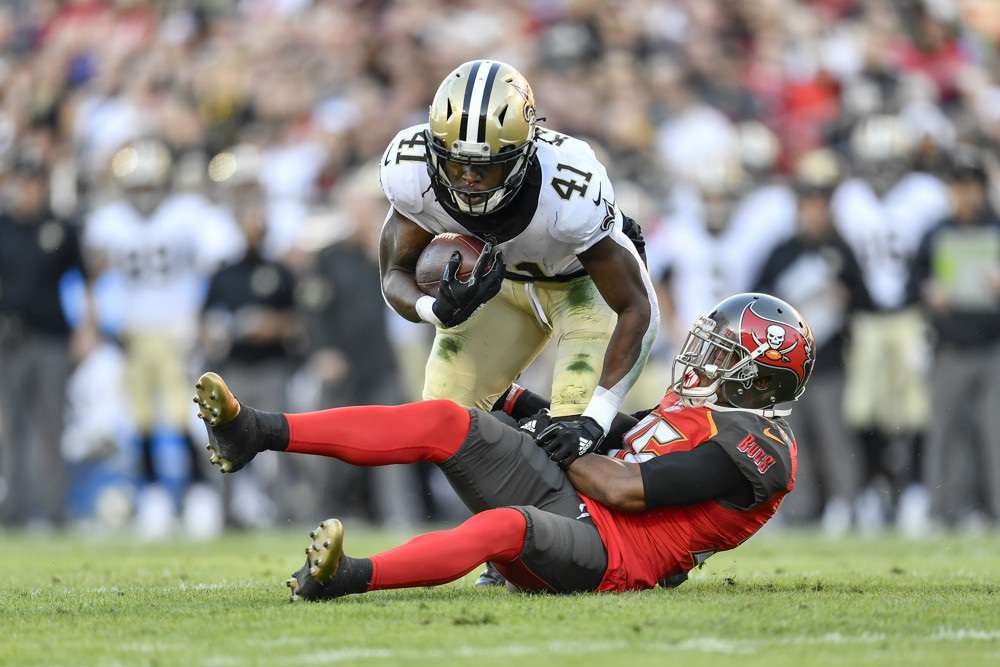
The NFL season might be over, but the information cycle never ends. Even better, neither does the drama. We’re less than a month into the offseason with some critical moves affecting the 2019 fantasy landscape and best-ball season as well:
- Joe Flacco traded to the Denver Broncos
- Kareem Hunt signed by the Cleveland Browns
- Antonio Brown demands a trade from Pittsburgh Steelers
These moves only involve veterans. We haven’t even gotten to the D.K. Metcalf picture doing his best Thanos impersonation. Apparently, Kyler Murray has QB-Height Twitter upset with his declaration. The storylines are compelling, but the seemingly shifting value of these players has already begun to affect early best-ball drafts.
Can’t wait for next fantasy football season? You don’t have to! 2019Best-Ball leagues are now forming at Fantrax.com!
What is Best-Ball?
For those new to the format, Best-Ball is one of the simplest formats quickly gaining popularity. It rewards the best drafters as that is the primary mechanic to the game. The allure comes in the differing strategies for how rosters can be constructed. Opportunity cost and positional scarcity are core tenets of drafting a winning team. Points per reception (PPR) scoring gives wide receivers and pass-catching running backs a boost skewing the investments at each position. But, there are limits.
It’s easy to assume that the PPR scoring coupled with the additional starting wide receiver would require a greater investment at the position. The same could be said about the ‘onesie’ positions (e.g. quarterback or tight end). However, the following series focuses on how winning rosters were drafted in 2018. From common builds to common players, we’ll investigate as much as can be gleaned from the data with an eye on 2019.
Macro Trends from 2018*
The easiest piece of best-ball data to look over are the different builds that drafters used throughout the offseason. A build comprises the number of players taken at any position and typically formatted as shown below:
QB/RB/WR/TE/TmD
It summarizes a best-ball team in totality, but not when the players were drafted (i.e. the opportunity cost). After some quick data processing, we can see there are specific builds that stand out from the others.

The Top 6 builds were pulled based on both win rate and the number of observations. Of course, there were other builds that won. For example, a build of ‘2/8/5/3/2’ had a 100 percent win rate. It was only used once negating its inclusion into the study along with others with similar usage. But, as previously stated, there are some general trends to pry from this high-level view that we can drill down into for more information.
The Core
The 2017 season produced nearly a 15 percent drop in total touchdowns from the previous season. Much of it was attributed to declining quarterback play. From Deshaun Watson to Aaron Rodgers, fantasy owners longed for the return of their signal callers as the tide to lift all fantasy assets. And it happened. Andrew Luck returned, Baker Mayfield emerged, and Patrick Mahomes set the tone bringing 2018 touchdown totals nearly back to their 2016 totals (1286). But while touchdowns were scored, they weren’t produced in an expected manner.
The prevailing assumption was that wide receivers were due for a bounce-back in 2018. Quarterback play was set to improve. The PPR scoring format already skewed towards receiving production. Because of this, a large sample of rosters was then built taking more shots at wide receivers than running backs.

Win rate results indicate a greater investment at running back was a key success component in 2018. Fantasy GMs that drafted 6 or 7 running backs had a clear edge over those leaning on more receivers. The touchdown totals point to why this is the case. While receiving touchdowns did increase, they were distributed to running backs and tight ends at a disproportionate rate. Running back touchdowns increased by nearly 15 percent while wide receiver touchdowns remained stagnant. This dropped the overall production at the position while boosting the value of both running backs and tight ends.
Looking to 2019
Early drafts suggest running backs will dominate the first few rounds despite the uptick in passing production. An example, while anecdotal, is the current draft going on Fantrax featuring our recent addition, Scott Engel. Midway through the second round, 8 running backs were selected in the first round. Nine total by the 17th overall pick. Only 3 wide receivers were drafted in the first round. Average draft position (ADP) hasn’t been set and rankings are based on 2018 finishes. In essence, it’s the wild west.
With values and roles sure to change over the next 6 months, a nuanced and flexible is required. We’ll dive more into the players that contributed to these high win rates and see if there’s any sustainability when planning for 2019.
*Win rate and observations based on data collected from 121 leagues drafted on the Fantrax platform in 2018.
Data Sources: Pro-Football reference, NFL team stats, Fantrax.com
Fantrax is one of the fastest growing fantasy sites of 2018. With multi-team trades, designated commissioner/league managers, and drag/drop easy click methods, Fantrax is sure to excite the serious fantasy sports fan – sign up now for a free year at Fantrax.com.

